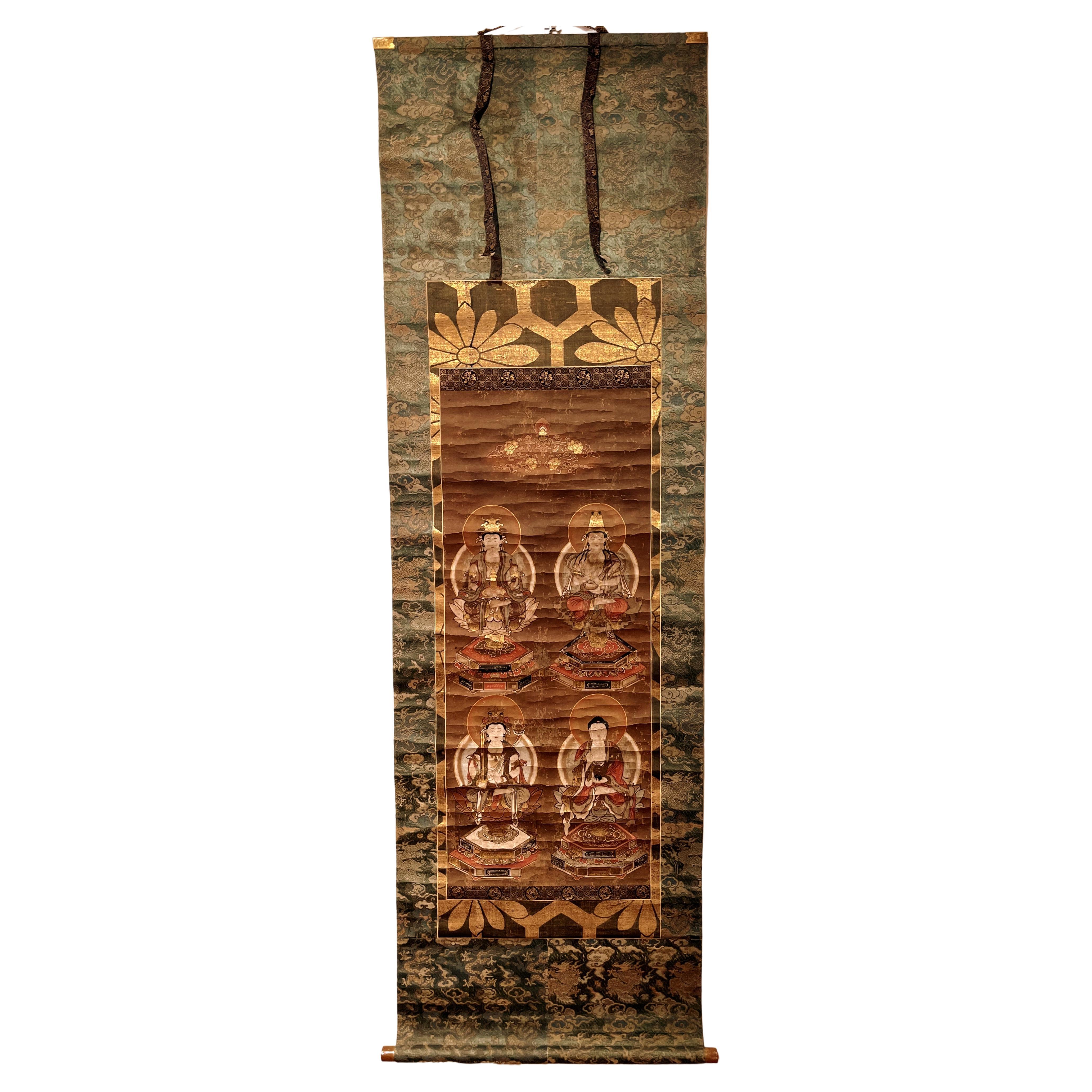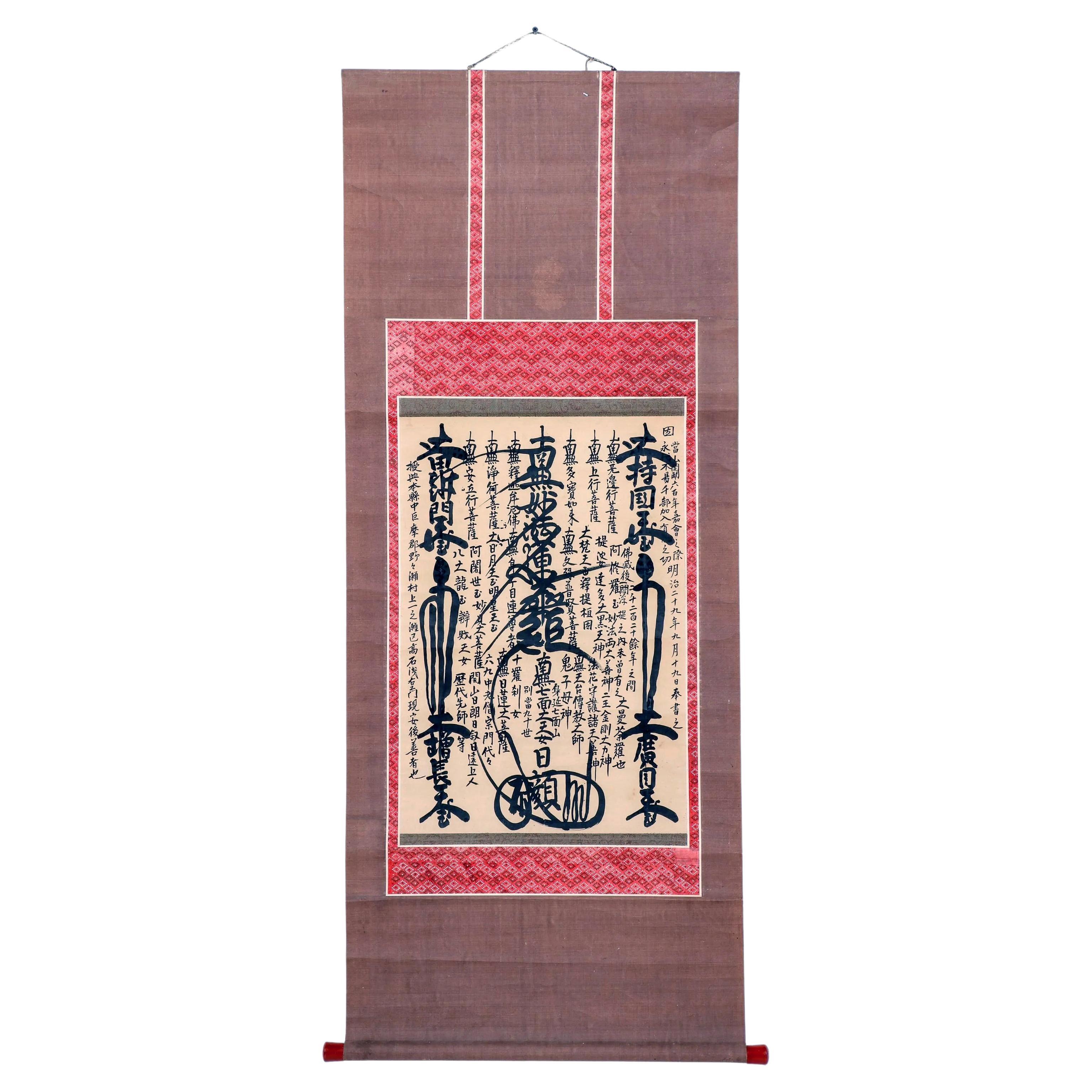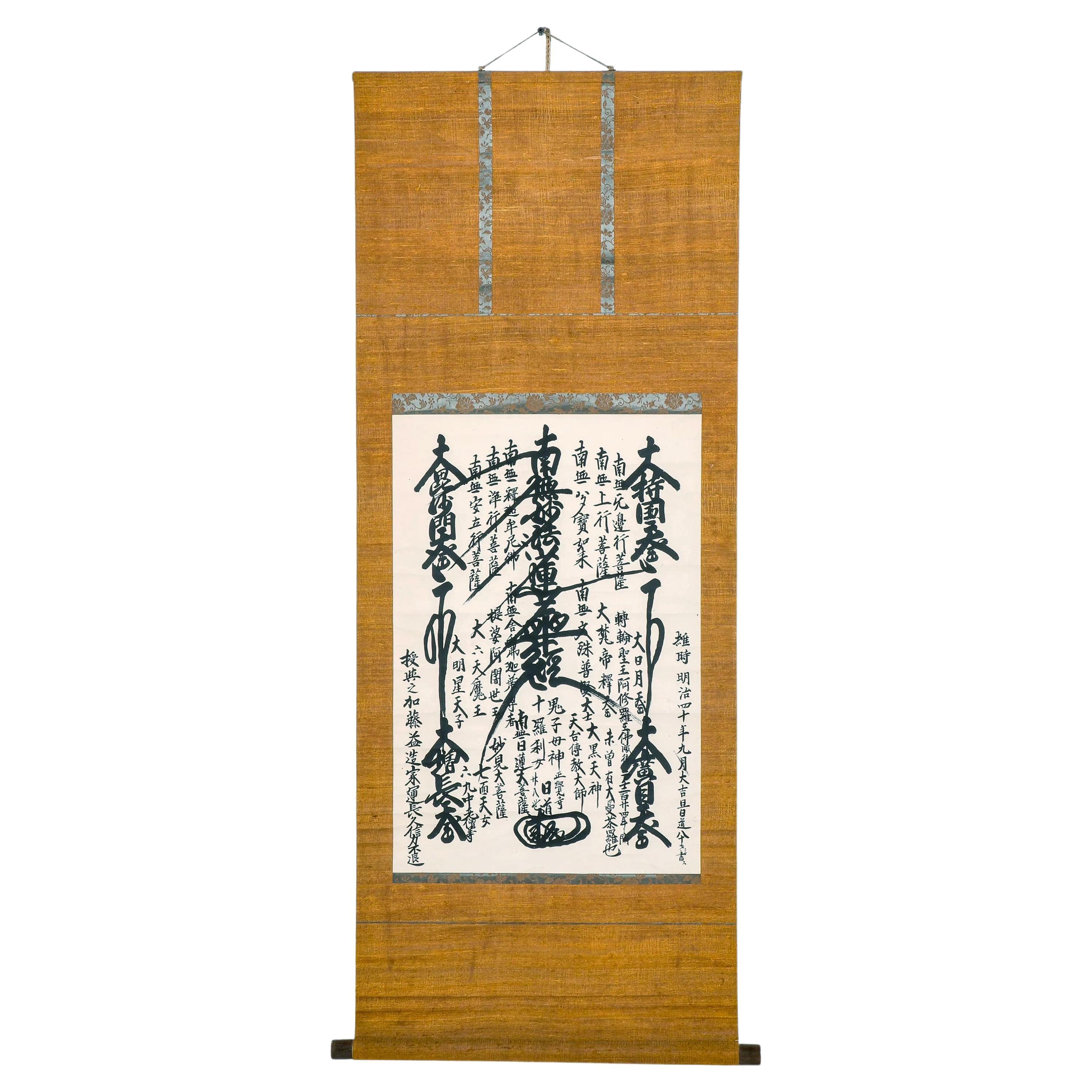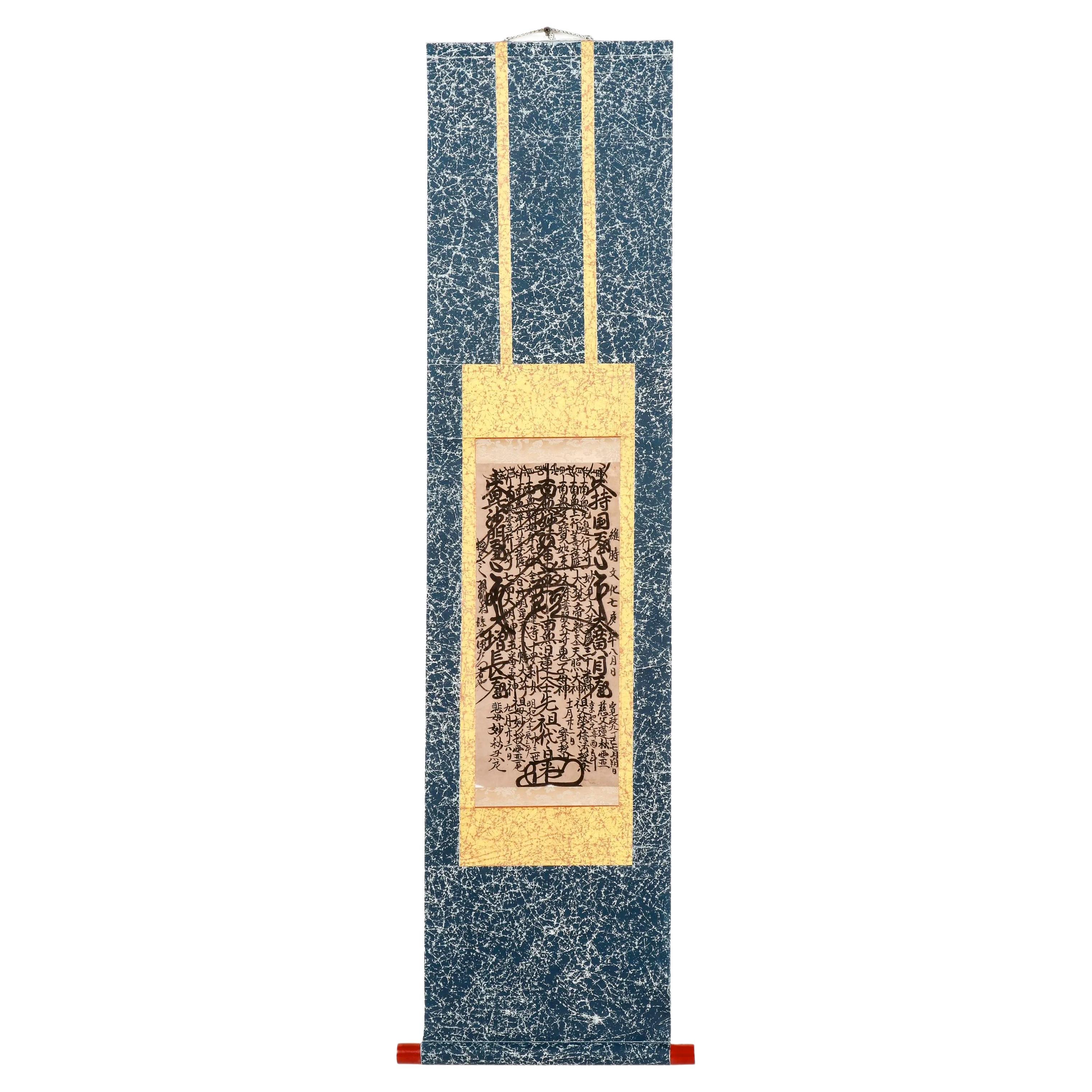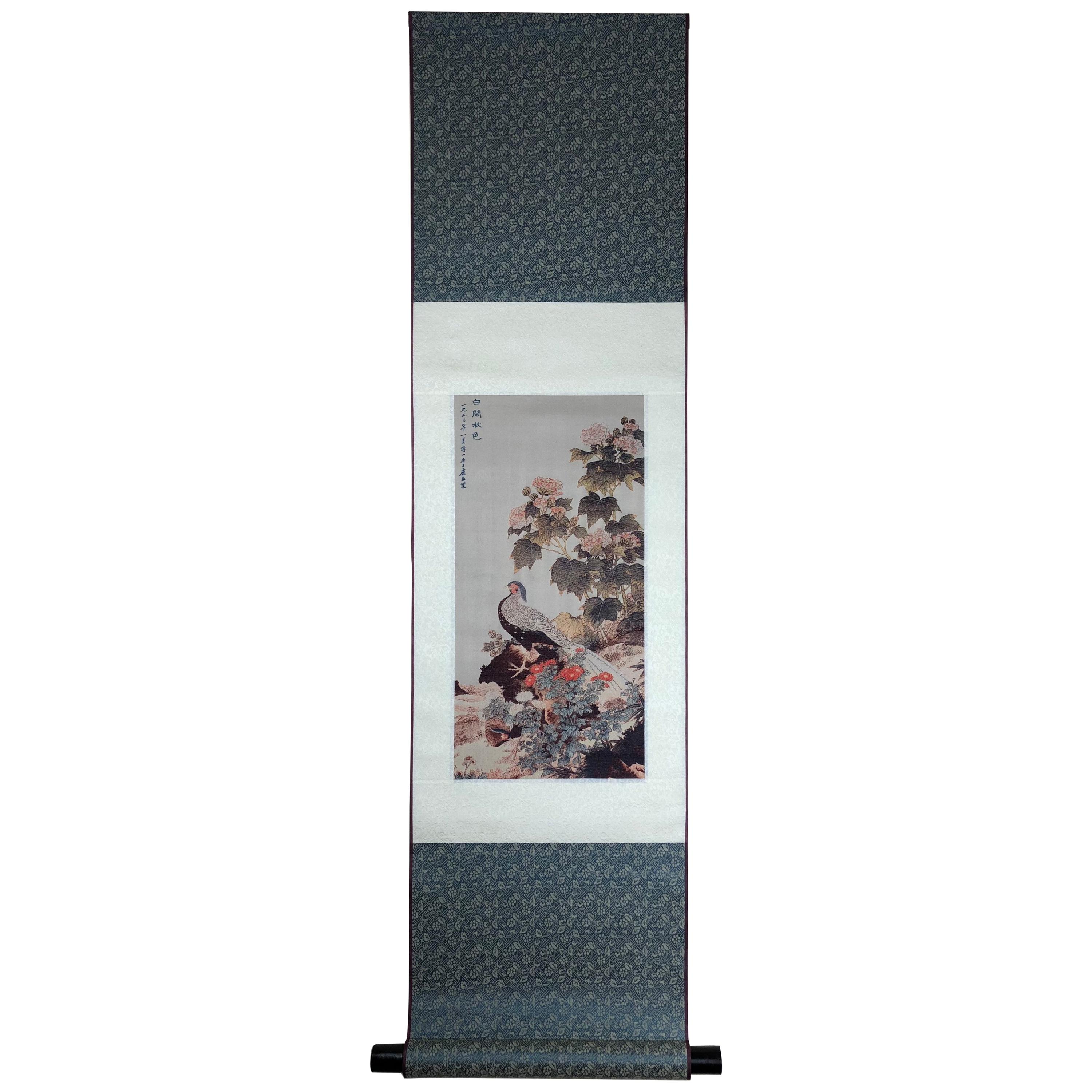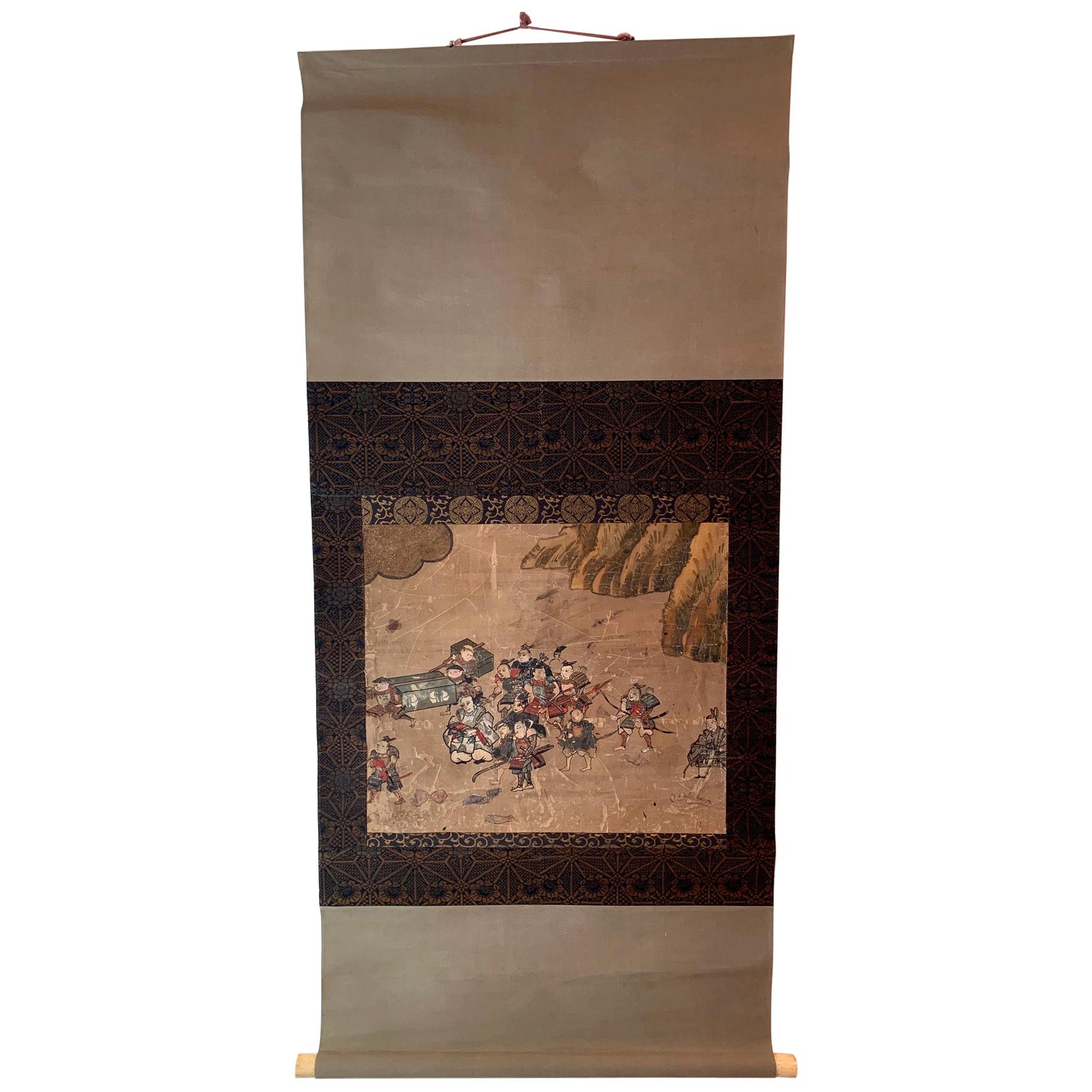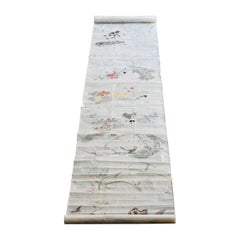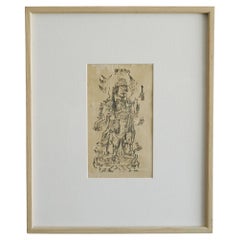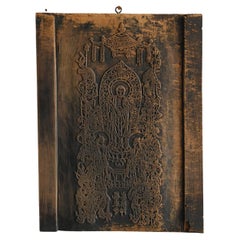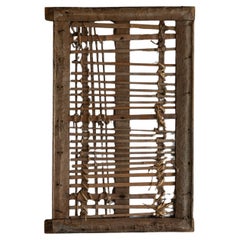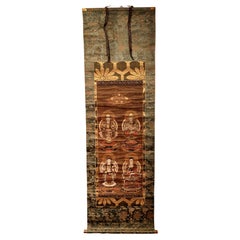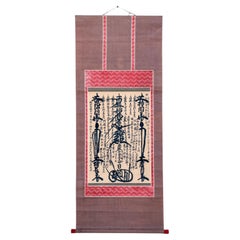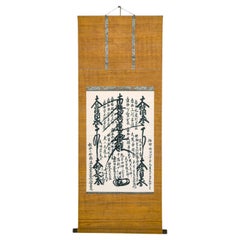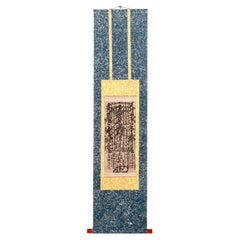Items Similar to Antique Japanese Buddhist pagoda hanging scroll /Buddhist painting/Edo
Want more images or videos?
Request additional images or videos from the seller
1 of 20
Antique Japanese Buddhist pagoda hanging scroll /Buddhist painting/Edo
$800
£613.10
€704.65
CA$1,123.64
A$1,257.56
CHF 658.29
MX$15,277.07
NOK 8,358.58
SEK 7,887.75
DKK 5,257.96
About the Item
This is a slightly different Buddhist painting believed to have been created by a Japanese temple monk during the Edo period (late 17th to 19th century). Rendered in ink on paper, the artwork forms the shape of a pagoda composed entirely of the six characters of the sacred Buddhist phrase “Namu Amida Butsu”.
Namu Amida Butsu is a phrase that expresses entrusting oneself to Amida Buddha and seeking salvation. In Japan’s Pure Land Buddhism, it is considered an essential invocation. Its meaning can be interpreted as “I take refuge in Amida Buddha” or “I entrust everything to Amida Buddha,” and it is believed that by reciting this phrase, one can be reborn in the Pure Land through the Buddha’s grace.
What makes this piece exceptional is the way the characters of Namu Amida Butsu, written in various sizes, are meticulously repeated to form the image of a pagoda. Some characters are written so small they are almost the size of grains of rice, demonstrating an extraordinary level of detail, patience, and devotion. A closer look reveals the delicacy of each brushstroke, offering a glimpse into the depth of the artist's faith.
At the bottom center of the pagoda, the artist’s name is inscribed: Saiken (西賢). Unfortunately, little is known about him. However, this method of creating pagoda imagery through repeated characters is known to have been practiced by prominent monks such as Yūten Shōnin (祐天上人) during the early to mid-Edo period, representing a unique cultural expression where faith is elevated to an art form.
Due to its age, the scroll bears marks of time—such as stains, minor insect damage, paper creases, and a repair on the right side where one of the bells in the drawing has a small piece of paper patched over it. Still, it remains in generally good condition. The slightly faded colors and aged washi paper add a calm and historical atmosphere to any room.
Compact in size, the scroll is easy to hang even in narrow spaces or small walls. Whether placed in a modern setting as an accent piece or integrated naturally into a traditional Japanese interior, it brings a striking presence to its surroundings.
This piece is a recommended item from our collection, valued for its simple yet profound beauty. Whether you are a collector of Buddhist art or seeking a one-of-a-kind art object, this scroll is sure to captivate your interest.
Dimensions and Weight
Width: 30.5 cm (from tip to tip of the wooden rods)
Paper width: 25.5 cm
Depth: 2 cm (diameter of the rod)
Length: 115.5 cm (from top of the string to the bottom of the rod)
Weight: 71 g
- Dimensions:Height: 45.48 in (115.5 cm)Width: 12.01 in (30.5 cm)Depth: 0.79 in (2 cm)
- Style:Edo (Of the Period)
- Materials and Techniques:
- Place of Origin:
- Period:
- Date of Manufacture:18th to the 19th century
- Condition:
- Seller Location:Sammu-shi, JP
- Reference Number:1stDibs: LU5487244805162
About the Seller
5.0
Platinum Seller
Premium sellers with a 4.7+ rating and 24-hour response times
Established in 2015
1stDibs seller since 2020
1,607 sales on 1stDibs
Typical response time: 6 hours
- ShippingRetrieving quote...Shipping from: senzoku, Japan
- Return Policy
Authenticity Guarantee
In the unlikely event there’s an issue with an item’s authenticity, contact us within 1 year for a full refund. DetailsMoney-Back Guarantee
If your item is not as described, is damaged in transit, or does not arrive, contact us within 7 days for a full refund. Details24-Hour Cancellation
You have a 24-hour grace period in which to reconsider your purchase, with no questions asked.Vetted Professional Sellers
Our world-class sellers must adhere to strict standards for service and quality, maintaining the integrity of our listings.Price-Match Guarantee
If you find that a seller listed the same item for a lower price elsewhere, we’ll match it.Trusted Global Delivery
Our best-in-class carrier network provides specialized shipping options worldwide, including custom delivery.More From This Seller
View AllJapanese antique sketch scroll / 1800-1900 / Flower, bird and animal paintings
Located in Sammu-shi, Chiba
This is a rough sketch of a Japanese painting drawn around the late Edo period to the early Meiji period (1800-1900) in Japan.
A picture is drawn by sticking and connecting short pi...
Category
Antique 19th Century Japanese Edo Paintings and Screens
Materials
Paper
A frame with an old Japanese Buddhist woodblock print / amulet / 1800-1912
Located in Sammu-shi, Chiba
This is a woodblock print made between the late Edo and Meiji periods (1800-1912).
It was originally a talisman given to visitors to temples as a good luck charm.
It is unclear which...
Category
Antique Late 19th Century Japanese Edo Prints
Materials
Paper
Japanese antique wooden blocks/1800-1920/paper charms/Buddhist art
Located in Sammu-shi, Chiba
This is a wooden woodblock produced in Japan from the late Edo period to the Taisho period (about 1800s to 1920s). The material used is something like beech wood, and the wood is dec...
Category
Antique Late 19th Century Japanese Edo Wall-mounted Sculptures
Materials
Beech
Japanese Antique Door "Wall Decoration" 1860s-1900s / Abstract Art Wabi Sabi
Located in Sammu-shi, Chiba
This was a very old Japanese warehouse (kura) window sliding door.
It was made during the Meiji period (1860s-1900s).
The frame is made of cedar wood and the lattice is bamboo.
It w...
Category
Early 20th Century Japanese Meiji Decorative Art
Materials
Bamboo, Cedar
20th century Korean old cloth "pojagi"/Wall hanging object/Tapestry
Located in Sammu-shi, Chiba
This is an old Korean patchwork cloth made around the 20th century.
The name is ``pojagi'' or ``chogappo.''
It is a cloth used to cover, wrap, or wrap things to protect them, and is ...
Category
20th Century South Korean Other Textiles
Materials
Cotton
Japanese paintings with old kanji characters/20th century
Located in Sammu-shi, Chiba
This is a painting of kanji drawn in Japan around the 20th century.
The artist's name is unknown.
It is hand-drawn.
This is 24 Japanese kanji, each of which is pronounced "kai" or "g...
Category
20th Century Japanese Showa Paintings
Materials
Paint
You May Also Like
Japanese Buddhist Painting, Hanging Scroll Painting
Located in Greenwich, CT
Japanese Buddhist Painting , Hanging Scroll Painting
Depicted Amituofo and Budhisattva in the painting sitting on the lotus crown seats. Bea...
Category
Antique 19th Century Japanese Paintings and Screens
Materials
Paper
$3,800 Sale Price
34% Off
Japanese Gohonzon Buddhist Calligraphy Mandala Scroll Meiji Period
Located in Atlanta, GA
A Japanese sumi ink calligraphy Buddhist mandala mounted as a paper hanging scroll known as Kakejiku or sometimes Moji mandala. Termed as gohonzon in Japanese, it is a venerated object within Nichiren Buddhism (Hokkeshu; lotus sect). The originally concept was developed by the 13th century Buddhist priest Nichiren to guide the energy of the devotional chanting to...
Category
Antique 1890s Japanese Meiji Paintings and Screens
Materials
Paper
Japanese Gohonzon Buddhist Calligraphy Mandala Scroll Meiji Period
Located in Atlanta, GA
A Japanese sumi ink calligraphy Buddhist mandala mounted as a paper hanging scroll known as Kakejiku or sometimes Moji mandala. Termed as gohonzon in Japanese, it is a venerated object within Nichiren Buddhism (Hokkeshu; lotus sect). The originally concept was developed by the 13th century Buddhist priest Nichiren to guide the energy of the devotional chanting to...
Category
Antique Early 1900s Japanese Meiji Paintings and Screens
Materials
Paper
Early Japanese Gohonzon Buddhist Calligraphy Mandala Scroll Edo Period
Located in Atlanta, GA
A Japanese sumi ink calligraphy Buddhist mandala mounted as a paper hanging scroll known as Kakejiku or sometimes Moji mandala. Termed as gohonzon in Japanese, it is a venerated object within Nichiren Buddhism (Hokkeshu; lotus sect). The originally concept was developed by the 13th century Buddhist priest Nichiren to guide the energy of the devotional chanting to...
Category
Antique 1810s Japanese Edo Paintings and Screens
Materials
Paper
Chinese Silk Hanging Scroll with Original Gold Lined Box
Located in Miami, FL
Beautiful Chinese silk scroll painting of a peacock surrounded by stunning foliage with calligraphy on the upper left side.
Housed in its original...
Category
Late 20th Century Chinese Chinese Export Prints
Materials
Silk
$675 Sale Price
24% Off
Antique Japanese Hanging Scroll Attributed to Iwasa Matabei
Located in Atlanta, GA
An antique ink and color on paper hanging scroll (kakejiku) with brocade border. It appears to be a fragment of a larger hand scroll depicting a procession of a lord with his entoura...
Category
Antique Early 17th Century Japanese Japonisme Paintings and Screens
Materials
Silk, Paper
More Ways To Browse
Japanese Antique Marks
Ink Scroll
Japanese Pagoda
Japanese Wall Hanging
Japanese Patches
Japanese Compact
Japanese Hanging Scroll
Japan Bell
Japanese Edo Buddha
Antique Temple Bell
Buddhist Bell
Buddha Bell
Japanese Temple Bell
Buddhist Temple Bell
Japanese Scroll Weights
Scroll Painting Buddha
Amida Buddha
Hanging Temple Bell
